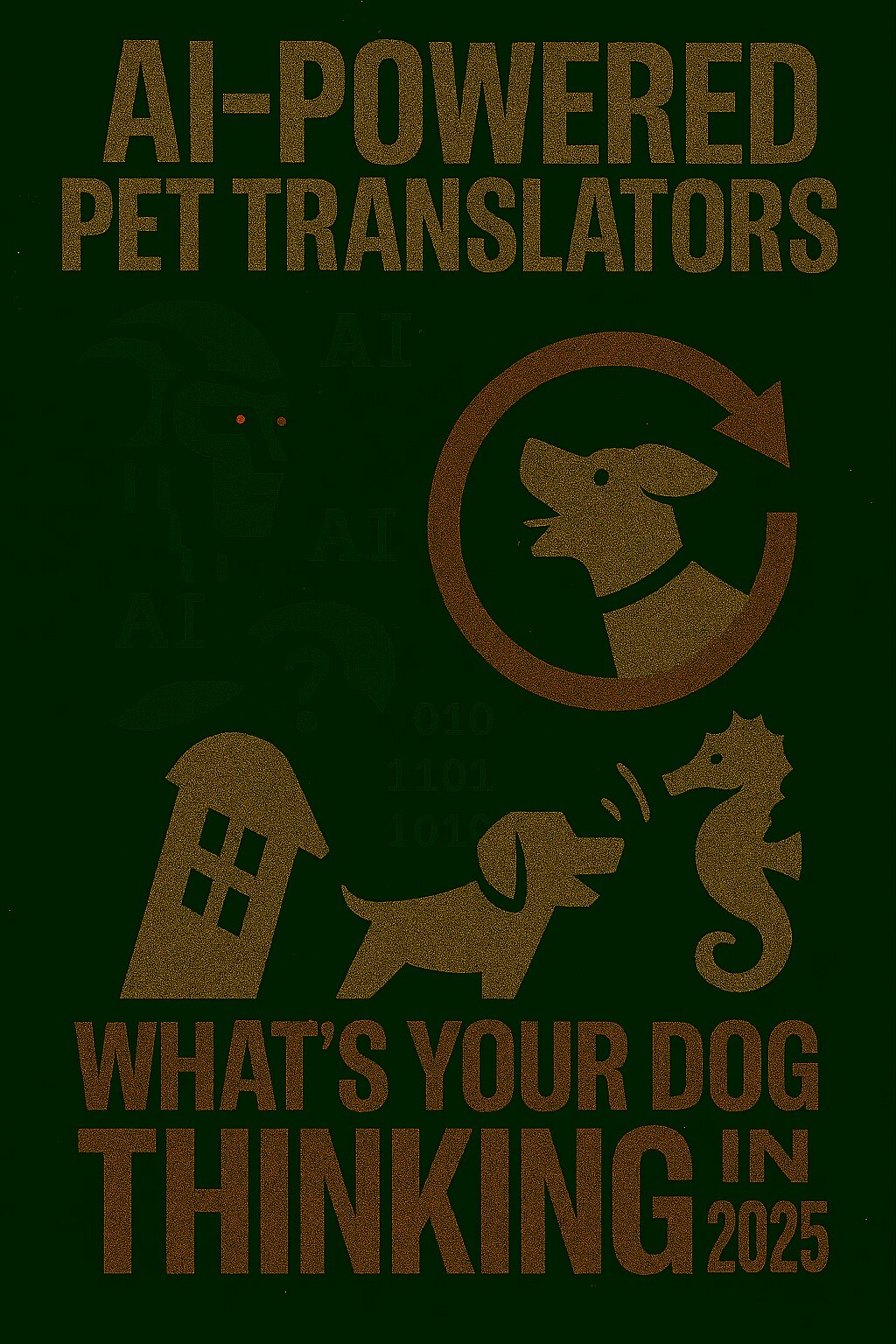Introduction: From Woofs to Words
For centuries, humans have wondered what their dogs are thinking. Is that bark a warning, a greeting, or a plea for snacks? In 2025, artificial intelligence is finally bridging the species gap. AI-powered pet translators are emerging as one of the most exciting innovations in pet tech—offering real-time insights into canine emotions, intentions, and needs.
🤖 What Are AI-Powered Pet Translators?
AI pet translators use machine learning, computer vision, and acoustic analysis to interpret animal vocalizations, body language, and behavioral patterns. These systems combine:
- 🎙️ Audio recognition of barks, howls, whimpers, and growls
- 📹 Video analysis of tail movement, ear position, and posture
- 🧠 Neural networks trained on thousands of dog-human interactions
- 📊 Predictive models that match vocalizations to emotional states
According to researchers at the University of Texas at Arlington, AI models are now identifying potential “canine phonemes”—the smallest units of dog sound that may correspond to human-like meaning.
📈 How AI Is Decoding Dog Language in 2025
| AI Feature | Functionality |
|---|---|
| 🎙️ Bark Classification | Distinguishes between alert, playful, anxious, and aggressive tones |
| 📹 Body Language Detection | Interprets tail wag speed, ear tilt, and eye contact |
| 🧠 Emotion Mapping | Predicts mood based on vocal and physical cues |
| 🐾 Behavior Prediction | Anticipates actions like play, fear, or hunger |
| 📡 Real-Time Translation | Converts signals into text or voice feedback for owners |
Smart collars and wearable sensors are now equipped with AI chips that analyze data on the go, offering instant feedback via mobile apps.
🧪 Real-World Applications in 2025
- 🐕 Baidu’s “animal language” patent powers smart collars that decode barks in real time
- 🐾 Engineerine reports AI systems that combine sound and movement to interpret pet emotions
- 🧠 Kindred Creatures showcases wearable translators for dogs, cats, and even hamsters
- 🐶 Researchers are building the world’s largest database of canine vocalizations to train future models
These tools are helping pet owners understand their animals better, reduce stress, and improve training outcomes.
⚠️ Challenges and Ethical Considerations
Despite the excitement, AI pet translators face hurdles:
- 🧮 Limited accuracy across breeds and individual personalities
- 🔐 Data privacy concerns from continuous audio/video monitoring
- ⚖️ Risk of over-reliance on tech vs. natural bonding
- 🛠️ Accessibility gaps for low-income pet owners
Solutions include breed-specific training models, opt-in data protocols, and open-source pet tech platforms.
🛡️ How to Scale AI for Pet Communication
✅ Key Strategies:
- Invest in diverse, breed-inclusive AI datasets
- Promote ethical standards for pet data collection
- Support public education on AI pet tech
- Align veterinary care with AI insights
- Encourage community feedback to improve translation accuracy
🔑 SEO Keywords to Target
- AI-powered pet translators 2025
- what’s your dog thinking
- smart collars for dogs
- canine emotion detection
- artificial intelligence pet communication
- dog bark translator technology
- pet tech innovations
🧭 Conclusion: Intelligence Meets Instinct
In 2025, AI is giving dogs a voice—and humans a deeper understanding. By decoding vocalizations and body language, pet translators are transforming companionship into conversation. The future of pet care isn’t just smart—it’s empathetic.

